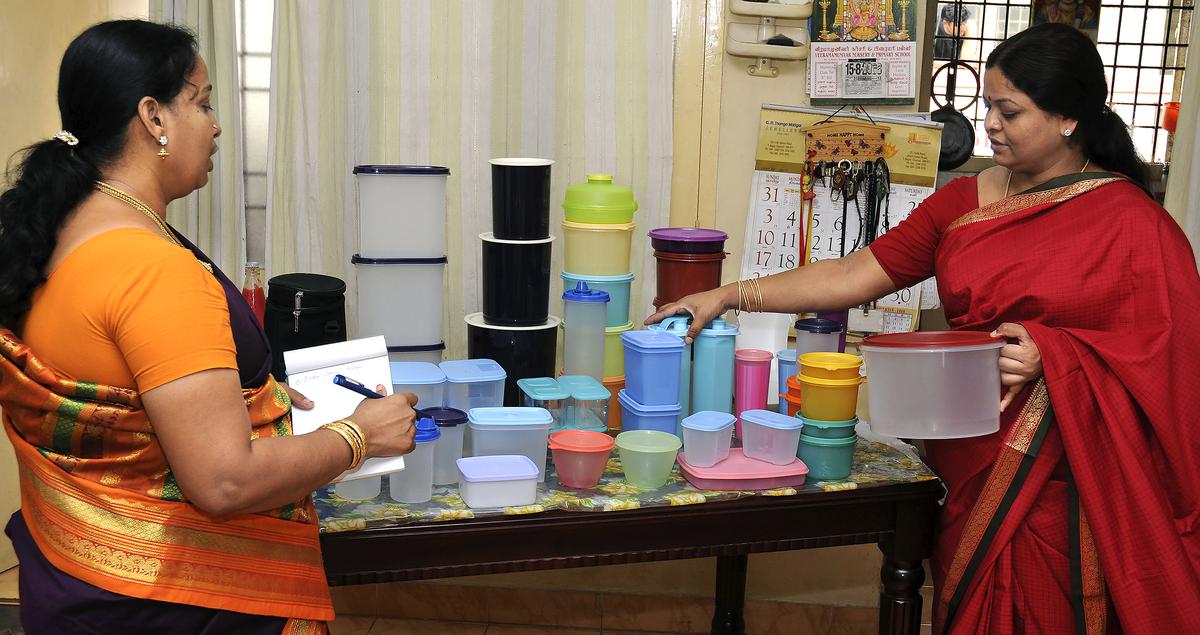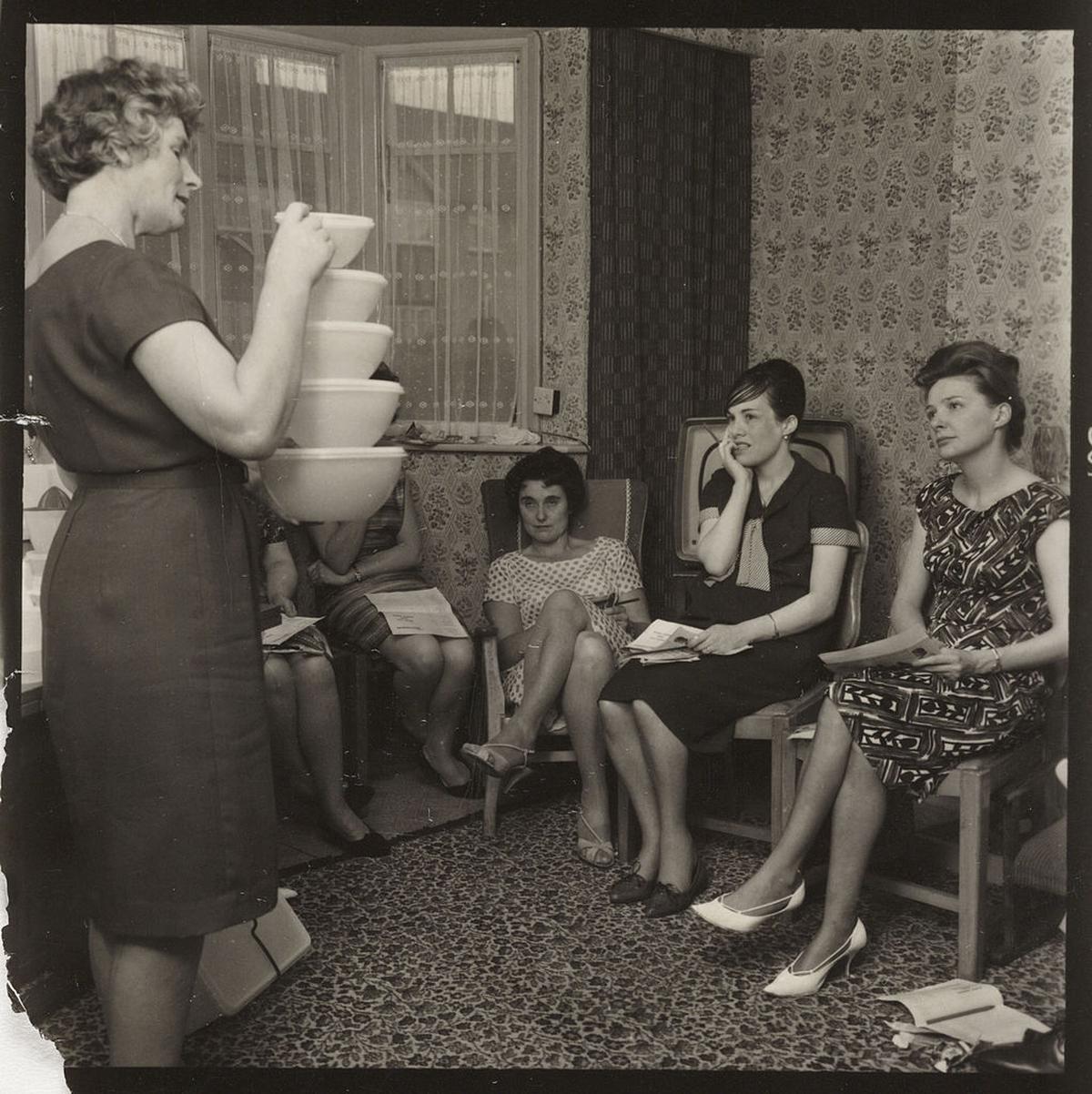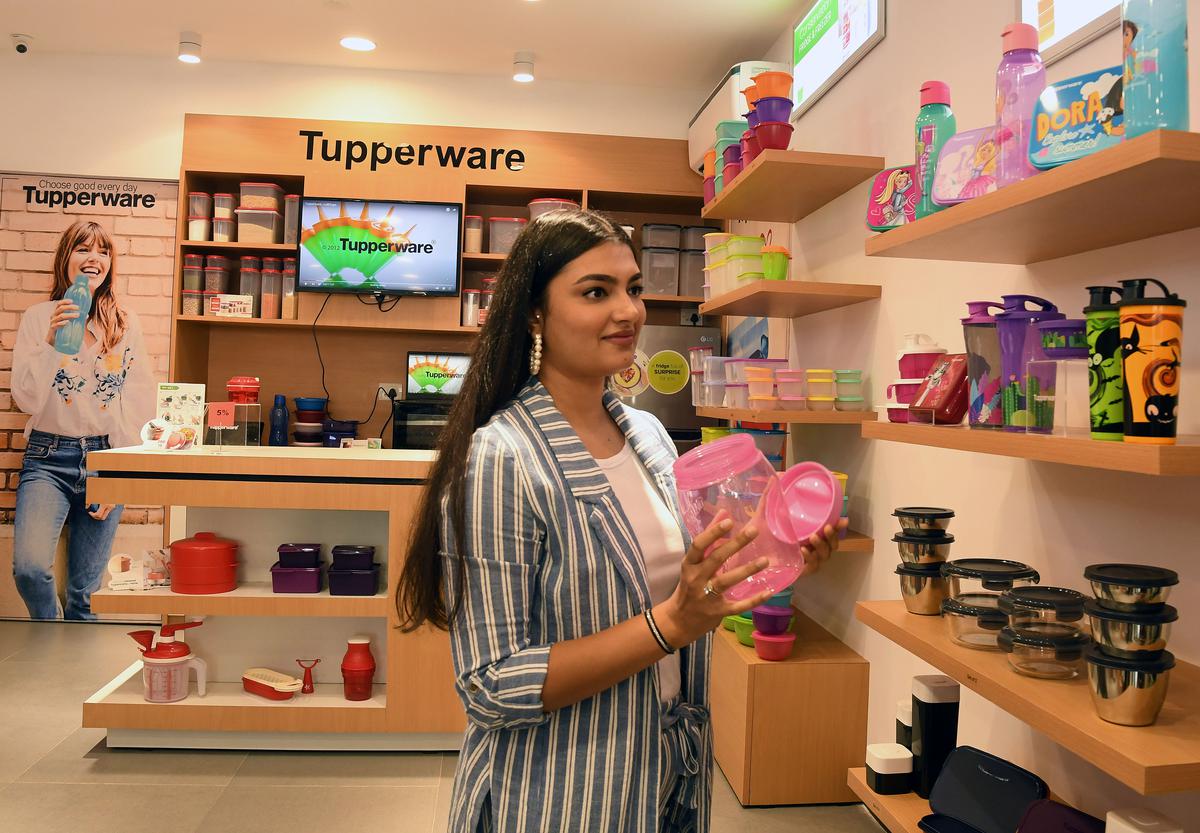Column | When Tupperware heralded ‘acche din’ in India

When introduced, Tupperware became an immediate hit, and the containers were soon hoarded and treasured.
| Photo Credit: Tupperware
Tupperware might be losing its lid as a company but there will always be a special corner in Indian hearts (and cupboards) for those containers.
Even today, thousands of Indians are reprimanded daily for having forgotten their Tupperware lunch boxes at school or office. Often they are more important than the lunch itself. Millions of Indian homes have Tupperware that does not belong to them — ones they “forgot” to return after someone sent them some food years ago.

Tupperware distributors in Chennai, 2008.
| Photo Credit:
S.S. Kumar
I discovered Tupperware in the U.S. as a student. Our home in India had just gotten a microwave but microwave-safe containers were still hard to find. On one of my trips back home, I brought along with the usual Godiva chocolate, Dove soap and duty-free perfume, a set of Tupperware boxes in various sizes.
They were an immediate hit, sweeping other more expensive gifts to the side. Over time, some lids warped, others went missing, the containers were stained yellow from food, but they were still hoarded and treasured. Tupperware and its desi cousins were nothing short of revolutionary in Indian homes and kitchens. Stainless steel dabbas were heavy. Glass bowls were not portable. Tupperware, like Maggi, was just exhilaratingly convenient.
They could nest in each other like Russian matryoshka dolls. We no longer needed to use that empty tin that once contained Danish butter cookies. When the Tupperware lid clicked smartly into place, everything felt right in the world. And best of all, we felt worldly.
As that iconic line in the film The Graduate had told us: “the future is plastics”. Tupperware’s arrival in India made us feel we were part of that future, that acche din had finally arrived and it would be leak-proof and airtight.
A Tupperware party every 1.5 seconds
Tupperware was started in 1946 in Massachusetts by Earl Tupper at a time when saving leftovers had become a household necessity in the economic hardships of the post-War years. But it cleverly became aspirational as well with self-employed salespeople, mostly women, hosting Tupperware parties at home to sell the product at a time when you could not buy it in stores.
Home party sales was the brainchild of Brownie Wise, a divorced single mother. At one point it is said there was a Tupperware party every 1.5 seconds somewhere in the world. It was WFH before we invented the acronym. It used influencers before social media made it a thing.

A Tupperware party in the U.K., 1963.
| Photo Credit:
Getty Images
The Tupperware party was as much a symbol of Americana as the Thanksgiving turkey. Now it feels dated but in its own way, it made the work of stay-at-home moms visible and gave it an entrepreneurial twist. The range of products suggested this was a company that valued that work and was devising clever ways to make it cool.
Tupperware could also be subversive. Tim Bolton-Maggs of Edinburgh reminisced in The Guardian about going to the first only-gay Tupperware party in the U.K. organised by the Campaign for Homosexual Equality. Barbara Matthias Allard of Spain remembered how a Dutch friend needed to take her parents’ ashes back to the Netherlands from Canada. Funeral urns were not allowed as baggage, so she put them into Tupperware containers and “so, disguised as sandwiches, they went back to their ancestors”.
Sparking joy in the kitchen
Tupperware arrived in India in 1996 with a fridge range that included ‘Cool ’n’ Fresh’ and ‘Bowled Over’. It may not have been as glitzy a launch as the Apple store but it was perhaps more revolutionary. It breached our kitchen wall of tin, aluminium and steel with the buzzwords of modernity — stackable, modular, scratch resistant, safe, odourless, leak-proof, durable. It understood the limitations of small modern kitchens where space was a premium. It carried the promise of reorganising our kitchens. As their website still says, Tupperware was meant to “spark joy in your kitchen”.

A Tupperware store in Chennai in 2021.
| Photo Credit:
Bijoy Ghosh
Kitchens were often tucked away to the side, hot and airless, covered in grease and smoke. To “spark joy” there was big. Tupperware India started with 30-40 saleswomen. By 2020, it had 70,000 alongside e-commerce and offline stores and was telling women that Tupperware could help you fulfill your dreams because if “she can you can”.
But times change. A thousand cheaper imitators flooded the market. Tupperware tried to reinvent itself. Its website talks about a “people and planet first” approach. In a world where plastic itself is losing favour, Tupperware embraced the mantra of ‘reuse and recycle’ and ‘100% virgin and BPA-free’.
Still, it is now in imminent danger of shutting down while thanks to our addiction to food delivery apps our kitchen cupboards are bursting with all kinds of cheap plastic dabbas and their perennially mismatched and missing lids.
In that plastic purgatory, we will remember that once we had real Tupperware. Soon perhaps Tupperware will become heirloom too, part of some bridal trousseau.
The writer is the author of ‘Don’t Let Him Know’ and likes to let everyone know about his opinions whether asked or not.
For all the latest Life Style News Click Here
For the latest news and updates, follow us on Google News.
